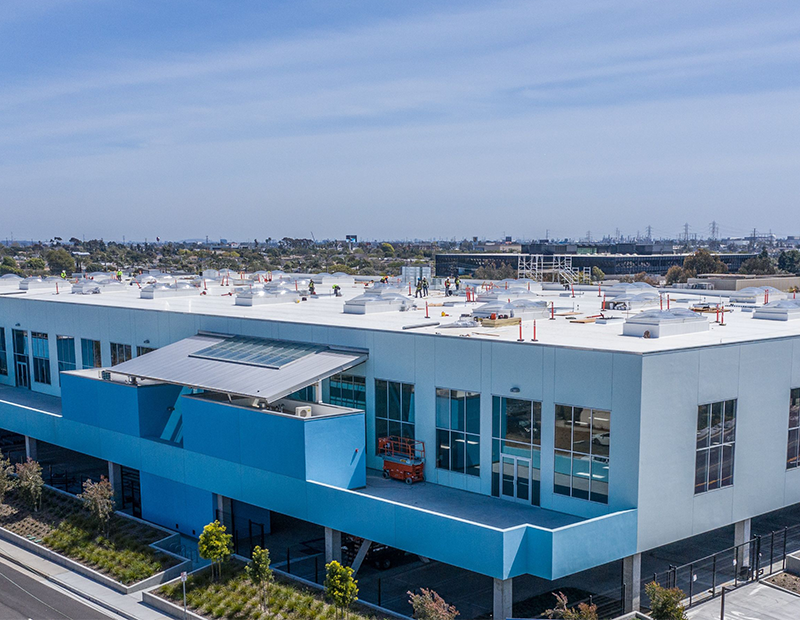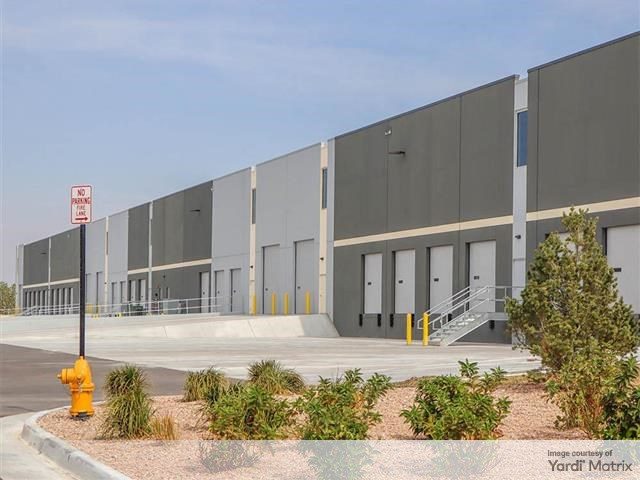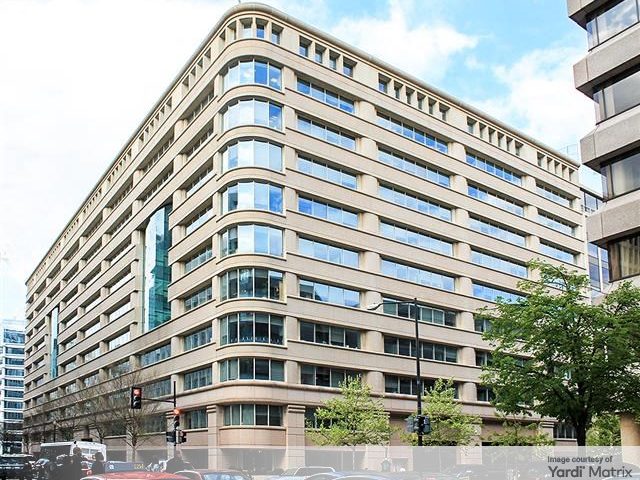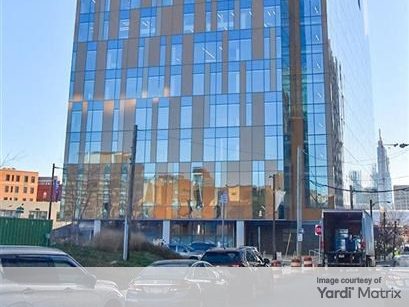Unlocking Energy Savings at Industrial Properties
Laura Rude of Link Logistics discusses how the Energy Solutions program helps operators reduce costs and simplify utility management.

Companies of all sizes encounter challenges when managing energy for their portfolios. An energy management program can help reduce operational costs and simplify utility management. Link Logistics, one of the largest owners and operators of last-mile warehouses, seeks to be an extension of the customer’s team by providing consolidated invoicing, identifying potential savings and reviewing rates.
In this in-depth conversation, Laura Rude, director of energy management for Link Logistics, shares details about the firm’s Energy Solutions program and how it can help streamline energy management and relieve customers’ utility management burden while generating cost savings.
She discusses how customers can get the most from the Link+ digital platform, a one-stop shop for data reporting, analysis and a variety of other needs. Rude touches on the exciting evolution of data and automation and its role in the future of energy management for industrial properties.
What are the biggest challenges of managing energy costs across large industrial portfolios?
Laura Rude: Our customers often run into a few hurdles when navigating the complexities of procuring energy across multiple regions. Each region has a unique set of rules and regulations, and that can be an issue across a customer’s diverse portfolio.
Another challenge we’re seeing companies face is competition between juggling immediate energy-efficiency cost savings and long-term decarbonization goals. Companies are having to make tough decisions about prioritizing those measures, looking at different procurement strategies and their overall cost savings while also keeping decarbonization targets in mind.
We’re also seeing the need for our customers’ energy efficiency measures to be measured and verified. As an example, a customer may complete an energy efficiency project and expect to achieve a certain amount of savings. But some of those savings can be lost over time, if there is no active monitoring and grading occurring. Energy Solutions solves for this savings leakage through the power of our Energy Management team.
I would also like to cover the “split incentive barrier” in industrial real estate. A landlord or asset owner may be hesitant about investing in energy-efficiency solutions like solar or renewables because the financial benefits only go to the tenant. That’s where Link Logistics’ Energy Solutions program can help, because it enables us to tackle this issue head-on. Through the program, we manage the customer’s utilities on their behalf and invest in sustainability upgrades for their building. This creates a model of shared savings where the benefit goes to the customer as well as Link Logistics, creating a beneficial arrangement for both parties.
What is the core mission of Energy Solutions?
Laura Rude: Our mission is to help our customers achieve savings and relieve their utility management burden while improving energy efficiency. We do this by handling utility billing and administration. Because we have access to our customers’ utility data, we can glean real-time insights and recommend tailored, energy-efficient solutions.
A big differentiator for us is that we operate on a national scale, allowing us to see energy trends in markets across multiple regions. We can track when utility rates are changing in markets and how we have been able to insulate rates, since we have visibility into what is coming. We can leverage those opportunities for several customers at once. We can see the commonalities of those situations, and when we’re talking about programs like LEDs or utility bill analysis, or our electricity rate optimization offering, we’re working to support both the customer’s goals and Link’s goals so we can drive sustainability in the long term.
How does an energy management program help tenants reduce costs and simplify utility management?
Laura Rude: Our goal is to be an extension of our customer’s team. We provide consolidated invoicing, identify savings opportunities and review their rates. Our small- to medium-sized customers who may not have access to energy consultants find this extremely helpful and beneficial to their operations.
Scale is important for customers to receive the best electricity rates. If customers were to procure their energy on their own, they could either be denied for small loads or given rates at a premium because suppliers charge more, as small loads have less benefit to them. Since our customers are with Link Logistics, they gain the advantage of our scale and receive preferable rates.
We handle the time-consuming tasks of energy management, so our customers can focus on running their business. We help them leverage our in-house team of energy management experts who can provide insights into their energy usage, especially through our Link+ digital customer platform. It’s a one-stop shop for customers’ energy program needs and houses the Energy Solutions dashboard that allows customers to monitor their energy consumption in real time.
Which features of the Energy Solutions program do users find most impactful?
Laura Rude: First and foremost, it’s cost savings. We’re saving on average 12 percent on a customer’s utility bills, which translates to six cents per square foot. In addition, customers gain the expertise of our in-house energy experts, who monitor their energy usage via their dashboard, providing a centralized platform to manage energy and utilities.
Customers also enjoy time savings and convenience. We handle the utility billing and administration. We work with the utility companies and suppliers, freeing up valuable time. We eliminate the need for customers to pay utility security deposits upon move-in. This feature takes the stress out of move-ins. Streamlined billing also makes this a valuable program for enrolled customers.
What role does customer engagement play in the success of energy initiatives?
For us, it’s about building strong relationships with customers, empowering them and focusing on a couple of key pillars.
First, our customers can connect with the experts on our energy management team who are available to answer questions, share valuable opportunities and provide detailed reporting. Our small- to medium-sized customers especially appreciate the personalized touch. It’s a level of expertise that is priced at a premium elsewhere, but free for customers participating in Energy Solutions.
We also highlight the key benefits of Energy Solutions to our customers and demonstrate the value and transparency that the program offers. The platform builds trust and keeps customers engaged. The mantra on our Energy Management team is, “You can’t manage what you don’t measure,” and we’ve built a unique program that provides us with energy data and insights so we can drive results on our customers’ behalf.
How do you see energy performance and sustainability influencing leasing decisions or asset value in the industrial sector?
Laura Rude: Customers are seeking energy-efficient spaces to meet their sustainability targets. Building efficiency standards are becoming stricter, and buildings that are already energy efficient are better positioned to avoid costly retrofits. Green buildings often attract better incentives and preferential financing, and that increases asset value.
We see investors wanting to buy into these high-performance buildings. They view them as less risky and more valuable in the long term. That’s why our Energy Solutions program is a true differentiator. At Link Logistics, the energy management team brings in experts who are already working to manage these assets in our portfolio and identify opportunities to unlock the value of programs like solar and LEDs based on insights from our customers’ energy data.
How do you envision the future of energy management for industrial real estate?
Laura Rude: At Link Logistics, we have a unique vantage point into the evolving energy landscape, which is the most exciting part for me. We’re seeing significant investments and advancements in AI and much smoother transitions than ever between power sources. This gives us a specialized ability to improve a building’s sustainability footprint in real time.
We also have the ability to purchase power intelligently, precisely when we need it, making it more cost-effective and more sustainable.







You must be logged in to post a comment.